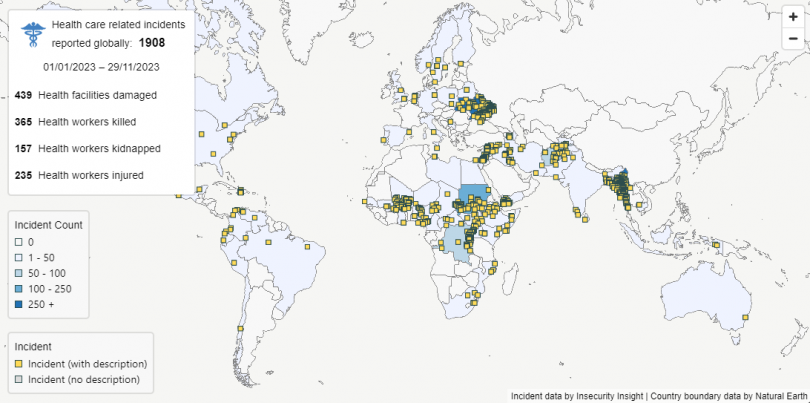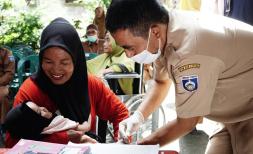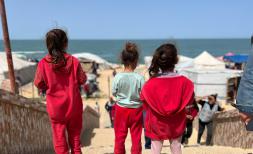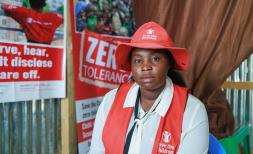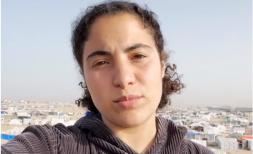Hospitals and Health Workers are #NotATarget

Dr. Fowsa, 31, inside the pediatric ward at a Save the Children supported hospital in Wajir, Kenya. Photo: Esther Mbabazi / Save the Children.
Hospitals and healthcare facilities are sanctuaries of healing, places where people seek refuge from illness, injury, and suffering.
Health workers dedicate their lives to alleviate suffering and save lives. Their work transcends political, social, and economic boundaries, focusing solely on preserving life and promoting health and well-being of others.
{cta | We stand side by side with children in the world’s toughest places. | https://donate.savethechildren.org/en/donate/ | Support our work
Health workers are bound by the principles of humanity, impartiality and neutrality. They treat patients based on medical needs, regardless of their background or affiliation, ensuring medical care is accessible to everyone, fostering a sense of humanity even in the midst of conflict.
Hospitals and healthcare facilities enable health workers to save lives, making them indispensable during times of crisis.
When conflict arises, these institutions and individuals become even more crucial, serving as beacons of hope amidst the chaos.

A health worker feeds Kamila, 5 months, with therapeutic milk in Puntland, Somalia. Photo: Mustafa Saeed / Save the Children.
According to the World Health Organisation, there are 136 million workers in the healthcare sector globally, approximately 70% of whom are women. All these workers have the right to a safe environment to carry out their work, including protection of their health and safety.
Yet hundreds of healthcare workers and facilities around the world are increasingly becoming unintended or intended casualties of violence.
Doctors, nurses, midwives, pharmacists, paramedics and other emergency workers, selflessly trying to save lives under challenging circumstances, are becoming targets themselves.
This year so far, there have been over 1,700 attacks on healthcare facilities and health workers, resulting in 342 medical staff being killed, 218 injured, and 121 kidnapped, as well as 421 health facilities damaged.
Map of incidents so far this year from Attacked and Threatened: Healthcare at Risk.
Take action to stop the war on children
There has been a steady increase in conflict related incidents reported by health facilities and workers over the past five years, with 2,230 reported last year, compared to 1,570 in 2021, 593 in 2020, 505 in 2019 and 367 in 2018.
This significant increase in attacks on health facilities and health workers is both alarming and distressing, and if current trends continue, there will be over 3,000 incidents reported by 2025 – a six-fold increase in just five years.

*denotes projected totals; 2023 data is for the year to date at time of publishing.
Targeting health facilities not only violates international humanitarian law but also undermines the very essence of humanity, resulting in severe consequences for local communities.
In conflict zones, the impact on health systems is already devastating, resulting in an increased demand for lifesaving care, while routine services and medical supplies are frequently disrupted.
Attacks on hospitals inevitably result in the loss of innocent lives, including patients, medical staff, and even bystanders. This loss of life is particularly tragic as it occurs in settings where healing and protection should be paramount.
Targeting health facilities exacerbates humanitarian crises and the suffering of those already affected by conflict. It hampers the ability of communities to access essential medical care, leading to increased preventable deaths and worsens the long-term health outcomes of affected communities.
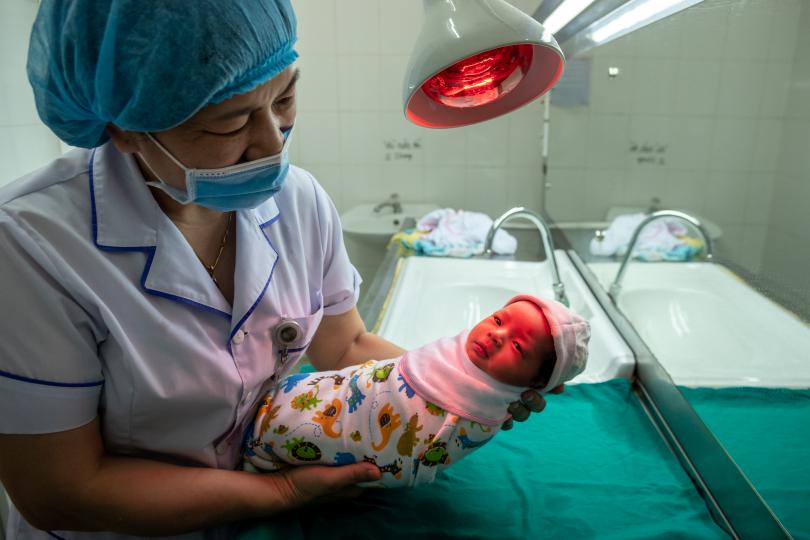
One-week-old Bao Chau is bathed by a midwife at Nghia Lo General Hospital, Vietnam. Photo: Linh Pham / Save The Children.
At times of conflict and crisis, healthcare institutions and individuals must remain protected, guided by the values of humanity and a universal commitment to humanitarian principles to safeguard vulnerable groups and civilians.
The Geneva Conventions explicitly protect medical personnel, facilities, and transportation during armed conflicts. Deliberately targeting hospitals and health workers is a clear violation of these international laws, which aim to preserve the well-being of civilians and ensure access to medical care.
The deliberate targeting of hospitals and health workers during armed conflicts is a grave violation of human rights and international humanitarian laws. Protecting these essential institutions is not only a legal obligation but a moral imperative that reflects our shared commitment to humanity.
There is a need for concerted action to ensure stronger implementation of the international laws to safeguard these vital institutions and the dedicated professionals who work within them.
There is a need for urgent action by all parties involved in conflicts to respect international humanitarian laws and ensure robust safeguarding of hospitals, healthcare facilities and health workers to ensure the well-being of communities in crisis around the world.
There is a need for multilateral institutions to hold governments, armed groups, and other stakeholders accountable for violations of international humanitarian law, and to undertake legal action against those responsible for attacks on hospitals and health workers.
Save the Children is working tirelessly to ensure access to healthcare for vulnerable communities in conflict zones around the world.
